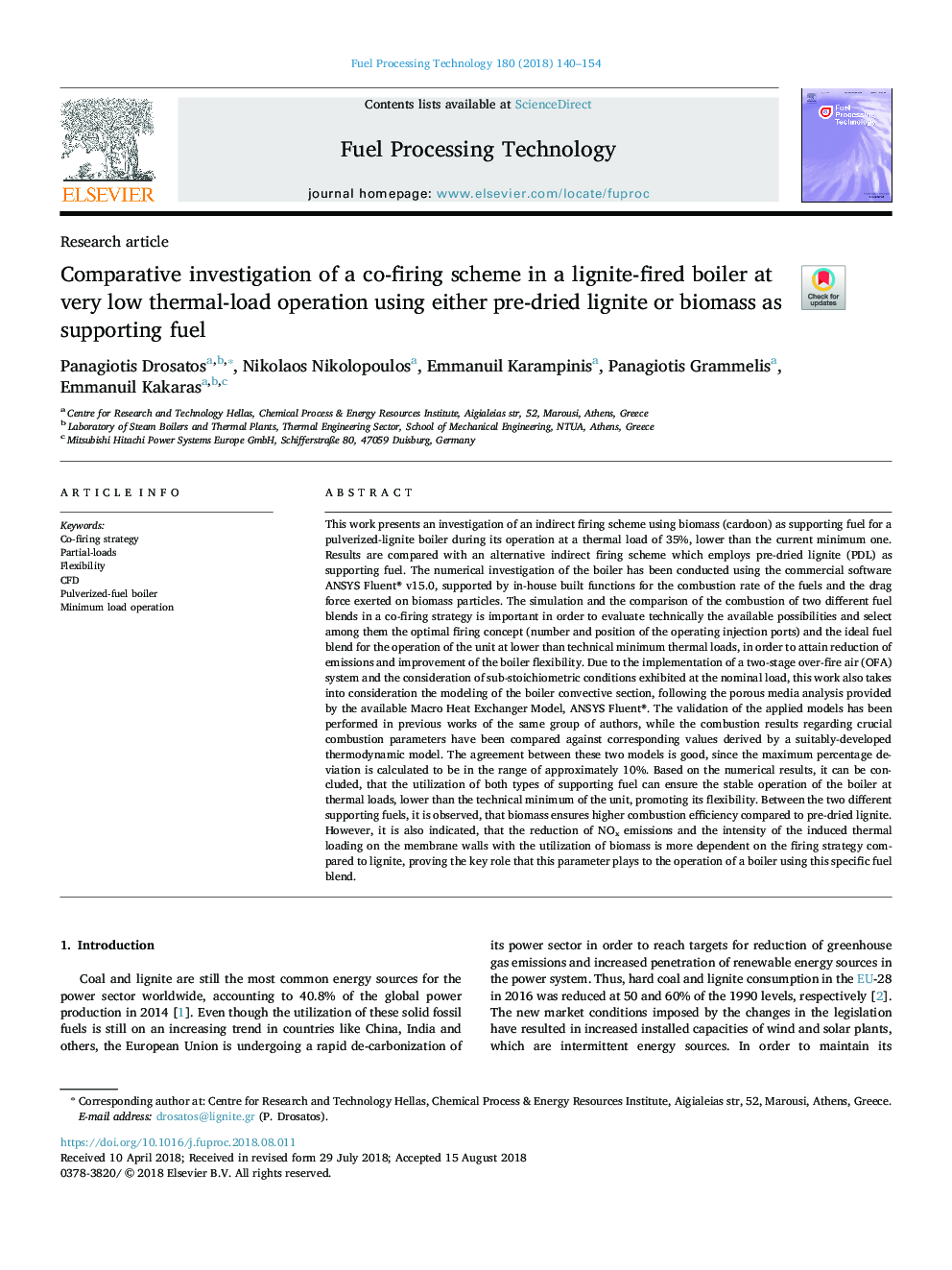| Article ID | Journal | Published Year | Pages | File Type |
|---|---|---|---|---|
| 9951797 | Fuel Processing Technology | 2018 | 15 Pages |
Abstract
This work presents an investigation of an indirect firing scheme using biomass (cardoon) as supporting fuel for a pulverized-lignite boiler during its operation at a thermal load of 35%, lower than the current minimum one. Results are compared with an alternative indirect firing scheme which employs pre-dried lignite (PDL) as supporting fuel. The numerical investigation of the boiler has been conducted using the commercial software ANSYS Fluent® v15.0, supported by in-house built functions for the combustion rate of the fuels and the drag force exerted on biomass particles. The simulation and the comparison of the combustion of two different fuel blends in a co-firing strategy is important in order to evaluate technically the available possibilities and select among them the optimal firing concept (number and position of the operating injection ports) and the ideal fuel blend for the operation of the unit at lower than technical minimum thermal loads, in order to attain reduction of emissions and improvement of the boiler flexibility. Due to the implementation of a two-stage over-fire air (OFA) system and the consideration of sub-stoichiometric conditions exhibited at the nominal load, this work also takes into consideration the modeling of the boiler convective section, following the porous media analysis provided by the available Macro Heat Exchanger Model, ANSYS Fluent®. The validation of the applied models has been performed in previous works of the same group of authors, while the combustion results regarding crucial combustion parameters have been compared against corresponding values derived by a suitably-developed thermodynamic model. The agreement between these two models is good, since the maximum percentage deviation is calculated to be in the range of approximately 10%. Based on the numerical results, it can be concluded, that the utilization of both types of supporting fuel can ensure the stable operation of the boiler at thermal loads, lower than the technical minimum of the unit, promoting its flexibility. Between the two different supporting fuels, it is observed, that biomass ensures higher combustion efficiency compared to pre-dried lignite. However, it is also indicated, that the reduction of NOx emissions and the intensity of the induced thermal loading on the membrane walls with the utilization of biomass is more dependent on the firing strategy compared to lignite, proving the key role that this parameter plays to the operation of a boiler using this specific fuel blend.
Keywords
Related Topics
Physical Sciences and Engineering
Chemical Engineering
Chemical Engineering (General)
Authors
Panagiotis Drosatos, Nikolaos Nikolopoulos, Emmanuil Karampinis, Panagiotis Grammelis, Emmanuil Kakaras,
